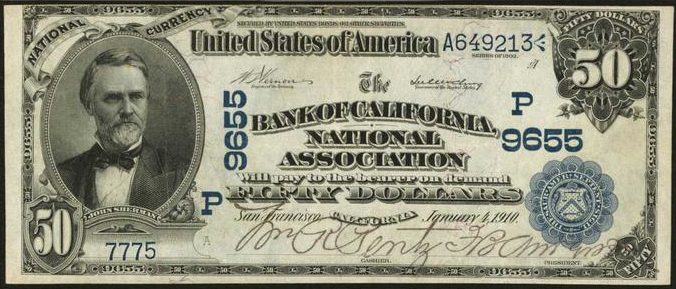National Bank Note Value – Series of 1902 Fifty Dollar Blue Seal
| Year: 1902 (1902-1928) | Type: National Currency / Bank Note | Denomination: Fifty Dollar Bill |
| Value: The value of a 1902 $50 blue seal is based on the bank of issue, condition, and serial number | ||
| We purchase series of 1902 $50 blue seals. Send us an email to tell us what you have admin@oldcurrencyvalues.com. We will respond quickly with our opinion and offer. | ||
| Description: 1902 $50 blue seals can be very rare or very common, there isn’t a whole lot in between. These are tricky because a fifty dollar bill from a common bank could be an extremely rare type and denomination for the state. We would strongly suggest you consult us for actual values.
John Sherman is featured on the front of all 1902 $50 bills. The back of each bill shows a train and two allegorical figures.
|
||
| Variations: There are lots of different signature combination possibilities for 1902 $50 blue seals:
Lyons – Roberts In addition to signature varieties, there are two different back design varieties. The earlier of the two varieties is called a “date back” and it it shown above. Date backs have the years 1902 – 1908 printed on their back. Plain backs are the other variety, and plain backs do not have the 1902 – 1908 dates on them. Despite all the varieties, almost all collectors focus on banks instead of signatures or types. |
||
| Inscriptions: National Currency – Secured By United States Bonds or Other Securities – United States of America Will Pay To The Bearer On Demand Fifty Dollars – Register of the Treasury – Treasurer of The United States – Cashier – President – Series of 1902 – This note is receivable at par in all parts of the United States in payment of all taxes and excises and all other dues to the United States except duties on imports and also for all salaries and other debts and demands owing by The United States to individuals corporations and associations within the United States except interest on the public debt. | ||

